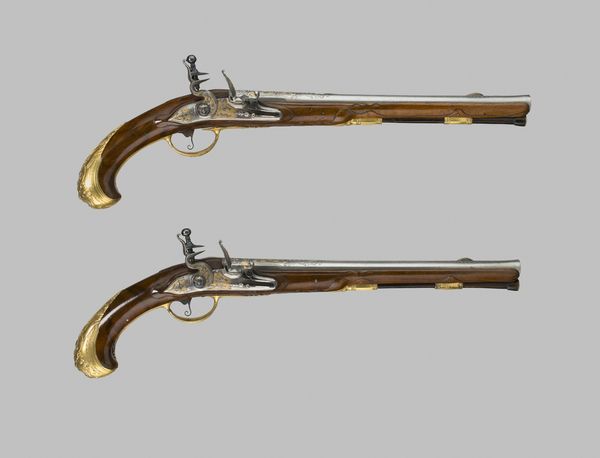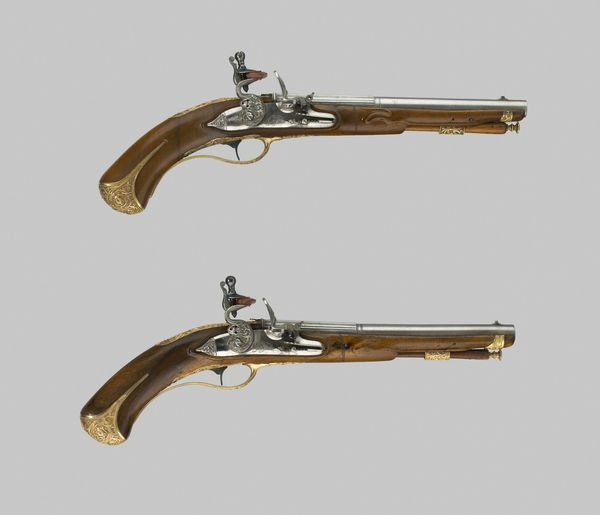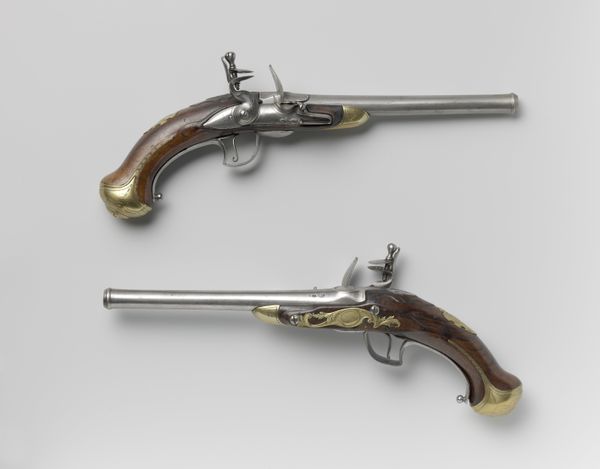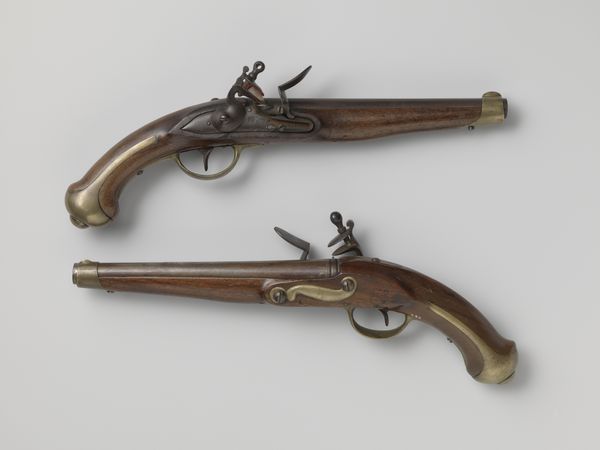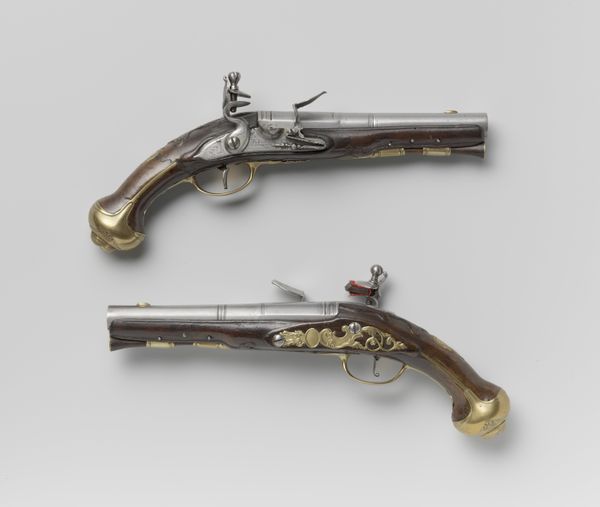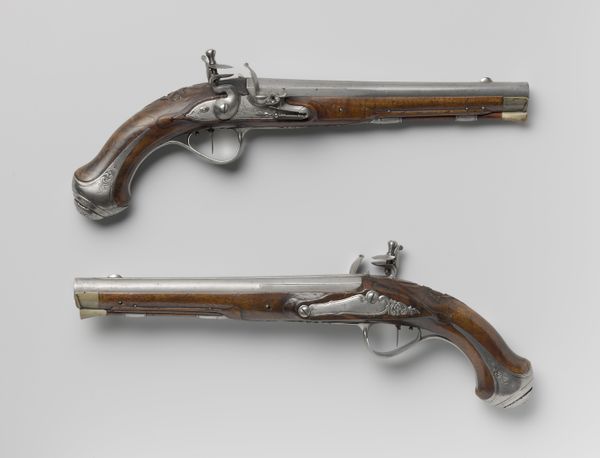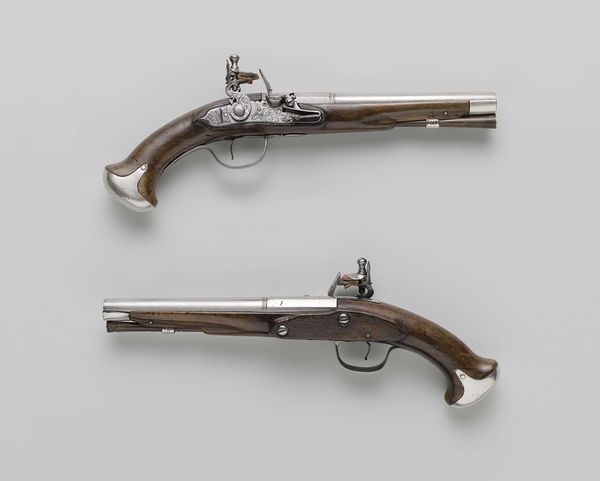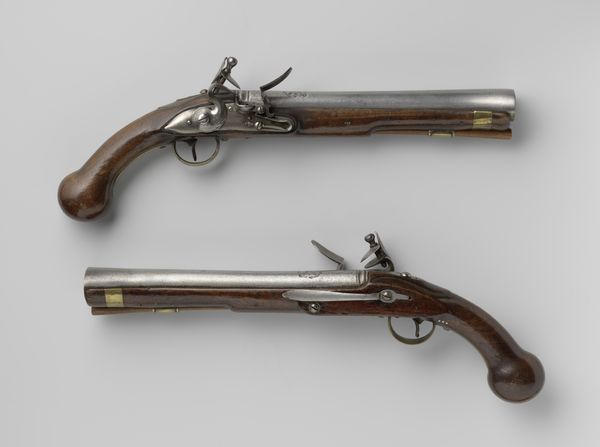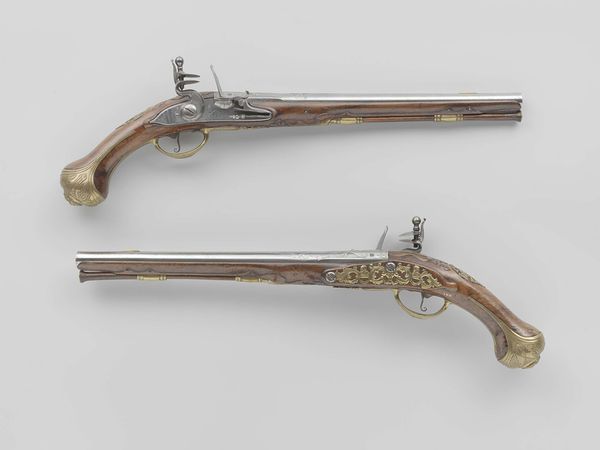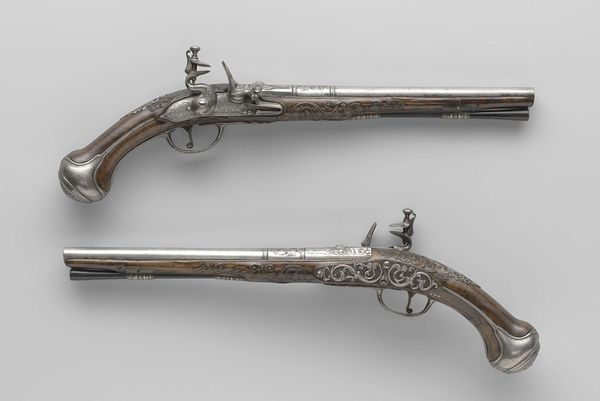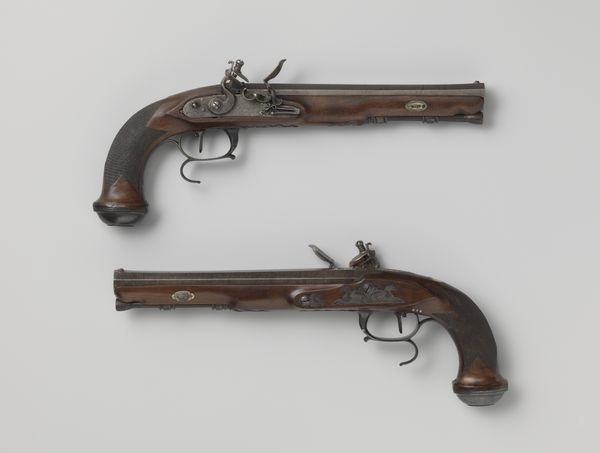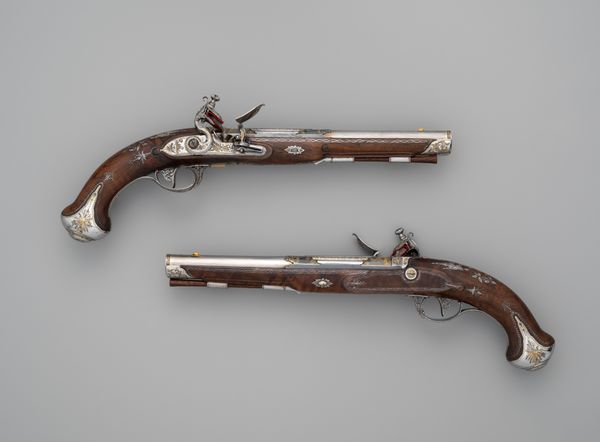
carving, metal, bronze, wood
#
weapon
#
carving
#
germany
#
baroque
#
metal
#
bronze
#
wood
#
armor
Dimensions: L. 48.8 cm (19 1/4 in.) Barrel L. 33 cm (13 in.) Wt. 2 lb. 7 oz. Caliber .63
Copyright: Public Domain
Editor: Here we have a pair of flintlock pistols crafted between 1700 and 1730, likely in Germany. They feature a mix of wood, bronze, and other metals, and strike me as surprisingly ornate. What stands out to you? Curator: For me, it’s the inherent contradiction. These are weapons, instruments of potential violence, yet adorned with meticulous carving and precious metals. It begs the question: who was the craftsman, and what was their relationship to the purpose of these objects? Were they merely skilled laborers fulfilling an order, or did they grapple with the moral implications of their craft? Editor: So, the tension between the object’s function and its embellishment is key? Curator: Precisely. Consider the social context. These weren't mass-produced; each pistol likely represents significant artisanal labor. Who owned these? What does it tell us about the accumulation of wealth and power in the Baroque era, when even instruments of force were canvases for conspicuous consumption? And the choice of materials is telling - the blend of readily available wood with costly bronze suggests a society structured around hierarchies. Editor: I hadn’t thought about the craftsmanship itself being a commentary on social class. It’s easy to see these objects simply as decorative, without considering the labor involved. Curator: Exactly. How does viewing this pair of pistols challenge your understanding of 'high art' versus craft, and the historical distinctions that separate them? Perhaps the labor invested, and the social messages embedded, elevate them beyond mere functional objects. Editor: I’ll definitely consider the class element, as well as the act of creation when analyzing historical objects from now on. Thanks for the insight! Curator: Likewise, reflecting on our assumptions always reframes the discussion.
Comments
No comments
Be the first to comment and join the conversation on the ultimate creative platform.
